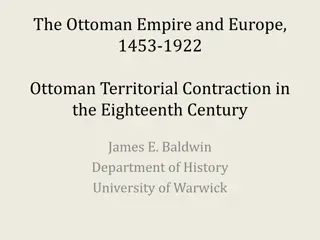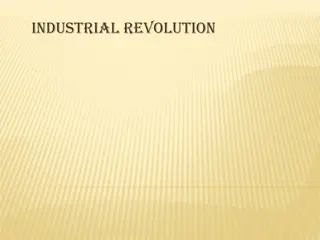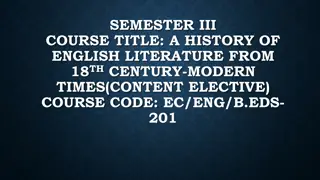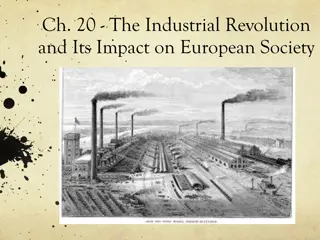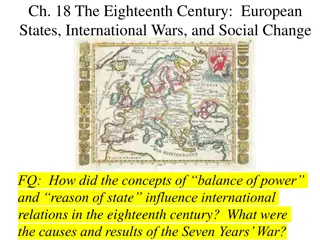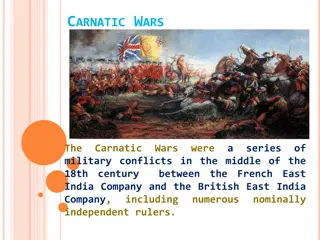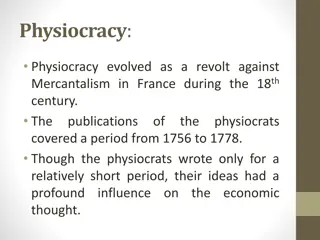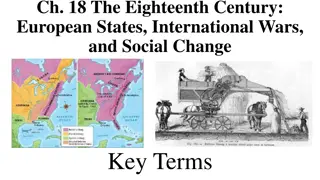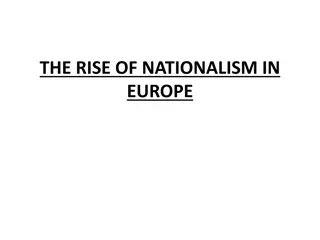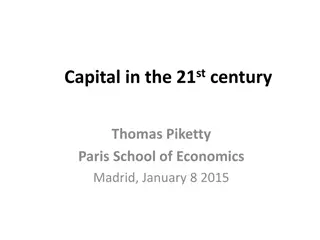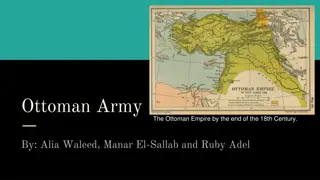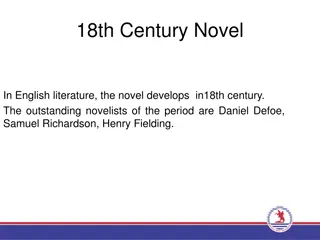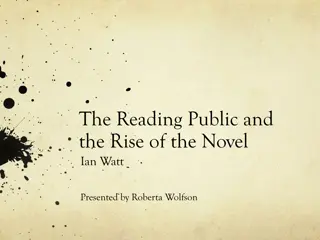Europe's Agricultural Revolution in the 18th Century
Europe witnessed significant changes in agriculture during the 18th century, marked by the transition from agrarian-based economy to technological advancements like crop rotation and enclosure. The expansion of Europe led to improvements in farming methods and increased crop productivity, impacting population growth and living standards. Enclosure practices, the Low Countries' influence, and the push for agricultural improvement played key roles in this transformative era.
Download Presentation

Please find below an Image/Link to download the presentation.
The content on the website is provided AS IS for your information and personal use only. It may not be sold, licensed, or shared on other websites without obtaining consent from the author. Download presentation by click this link. If you encounter any issues during the download, it is possible that the publisher has removed the file from their server.
E N D
Presentation Transcript
Unit 4 Lecture Notes
The Expansion of Europe in the 18thcentury Chapter 17
preindustrial Europe By the end of the 17thcentury, the economy of Europe was agrarian. 80%+ of the population The Open-Field System: Medieval system of farming that divided the land to be cultivated by the peasants of a given village into several large fields, cut into long narrow strips. Peasants farmed each field as a community.
Agricultural Revolution The Agricultural Revolution: Period of technological improvement and increased crop productivity that began in the mid 17thCentury How do you solve the problem of soil exhaustion? Crop rotation scientific farming
The Low Countries & England Why did the agricultural revolution first manifest in the Low Countries? 1. One of the most dense population areas in Europe 2. Growth of towns & cities 3. Markets allowed for specialization English used Dutch system of drainage and water control Viscount Charles Townsend advocated for agricultural improvement Turnip Townsend Jethro Tull used empirical research to create better farming methods
Enclosure Enclosure: The movement to fence in fields in order to farm more effectively, at the expense of poor peasants who relied on common fields for farming and pasture. As you read Arthur Young on the Benefits of Enclosure, answer the following questions on a separate piece of paper: 1. What are the various improvements in agriculture described by Young in this passage? How do they relate to one another? 2. Why does Young think that enclosures produce more employment opportunities than open fields? Based on your reading in the chapter, did everyone perceive the benefits produced by enclosure in the same way as Young?
Limitations on population growth Until 1700, European population growth was slow and irregular. 14thcentury Black Death 15thcentury higher standard of living increases population 16thcentury population growth > agricultural production 17thcentury limited resources poverty end of population growth
Malthusian Trap Thomas Malthus (1766-1834) Population would always tend to grow faster than the food supply. Essays on the Principle of Population (1798) Encouraged marrying late in life not optimistic Crash Course History: in your notes... 1. According to Malthus, what factors would ensure that population remains constant? 2. Malthus s theory on population growth has been proven to be incorrect. What are some reasons for this?
The Growth of the cottage industry The Cottage Industry: A stage of industrial development in which rural workers used hand tools in their homes to manufacture goods on a large scale for sale in a market. Poor peasants and landless laborers willing to work for low wages First developed in England
Cont. The Putting-Out System: The 18thcentury system of rural industry in which a merchant loaned raw materials to cottage workers, who processed them and returned the finished products to the merchant. Reduction of the power of guilds (cottage workers produced many kinds of goods) Growth of the textile industry population boom
Urban Guilds What were guilds, and why did they become controversial in the eighteenth century? Guild System: artisan trade associations received a monopoly over its trade and the right to train apprentices and hire workers. Each had detailed set of privileges Struggled with rural competition (Cottage Industry) Guild Procession in 17th Century Brussels
Adam Smith Adam Smith (1723-1790): Scottish Enlightenment Limited government regulation raise living standards Economic Liberalism:A belief in free trade and competition the invisible hand Division of Labor Promoted reduced power of Urban Guilds
Mercantilism Review: what is Mercantilism? What are examples? The Navigation Acts: A series of English laws that controlled the import of goods to Britain and British colonies. Created a monopoly on trade with English colonies. Form of economic warfare Anglo-Dutch Wars England surpasses Dutch in shipping, trade, and colonies
Growth of foreign trade Expanding colonies = expanding market for market for British goods. Cottage textile industry States of continental Europe developed own industries to deal with rural poverty & overpopulation Protectionist & mercantilist policies Drop in English wool exports to Europe
Mercantilism Vs. Economic Liberalism Using your textbook and notes, create a T-Chart outlining the specific policies of Jean-Baptiste Colbert (Mercantilism) and Adam Smith (Economic Liberalism). You should have multiple examples in each category. Be ready to discuss! LEQ (2002): Both Jean-Baptiste Colbert (1619-1683) and Adam Smith (1723-1790) sought to increase the wealth of their respective countries. How did their recommendations differ? Answer the prompt in a paragraph.
Identities and Communities of the Atlantic world Growth of European colonies created new identities Creoles: People of Spanish blood born in the Americas (wealthy merchants) Much of the population descended from unions of European men and indigenous or African women. Most migrants were men
Atlantic Enlightenment The colonies of British North America adopted the Scottish model of the Enlightenment Pragmatism, self-improvement and ethical conduct Benjamin Franklin deism & constitutionalism Spanish American colonies Northern Enlightenment thinkers saw Spanish & American colonies as barbaric. Catholic Church censorship Encouraged Creoles to criticize government & promote autonomy
The Atlantic Slave Trade Atlantic Slave Trade: the forced migration of Africans for slave labor on plantations & other industries. Rise in plantation agriculture led to increased demand Peaked in 18th century Abolition movement began in 1780s in Britain Women were prominent in the effort to ban slavery 1807: Parliament abolishes the British slave trade





